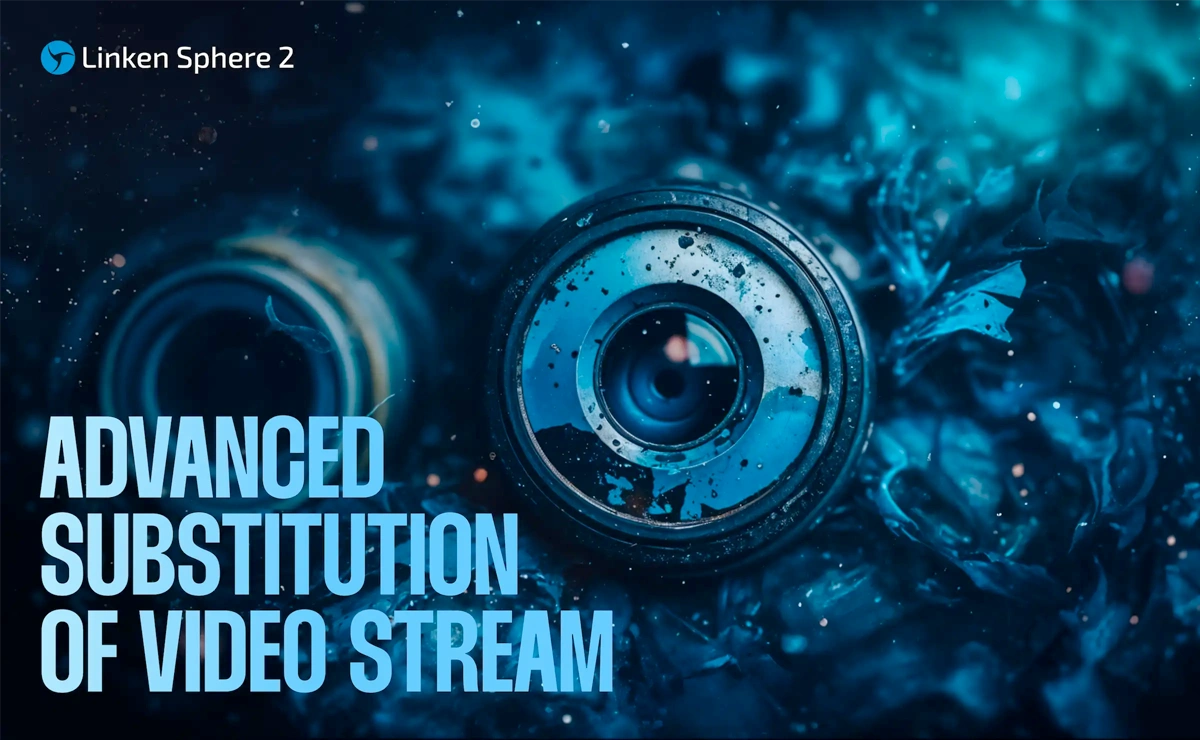Updated Video Stream Substitution in Linken Sphere

Introduction
Welcome back, friends! Today, we continue our review of the key innovations in the latest update of our product. One of the most important improvements is the refinement of the built-in video stream substitution feature — a tool used for passing KYC verifications and other procedures requiring webcam access.
This functionality was first announced in version 2.4.0 (April 2025). You can read more about the initial release in our article. Since then, based on your feedback, we’ve significantly enhanced this feature, making it more intuitive and versatile for a wide range of use cases.
Our goal was to make working with video stream substitution as seamless as possible, removing complex configurations and letting you focus on what matters most — achieving your goals.
What’s New?
Since the first introduction of the video stream substitution feature, we have continuously worked on improving it based on your needs. Initially, this option was available exclusively to Windows users and supported only video formats (MP4, MOV, Y4M).
However, understanding the importance of cross-platform compatibility, just one month after release, the feature was also made available for macOS users. But the development didn’t stop there: in a recent update, we significantly expanded its capabilities by adding long-awaited support for images — both static and animated. This opens up new use scenarios and increases flexibility when working with various platforms.
Now, you can submit static document images or selfies — tasks that previously required additional tricks, such as when working with Facebook and other advertising platforms.
As of today, the enhanced video stream substitution feature in Linken Sphere works fully on both Windows and macOS and supports the following file formats:
Supported video formats:
- MP4 — a widely supported compressed video format
- MOV — Apple’s proprietary format with high fidelity and quality
- Y4M — a non-recursive, uncompressed YUV frame format
Supported image formats:
- JPG/JPEG — a popular lossy compression format, ideal for photos
- PNG — a lossless compression format that supports transparency
- GIF — an animated image format with a limited color palette
Using Images for Video Stream Substitution
Now that we’ve reviewed the expanded list of supported formats, let’s move on to practical use: how to use static or animated images to simulate a video stream in Linken Sphere. The process is intuitive and largely similar to using video files, but includes nuances that make it even more convenient for specific tasks.
- Start a working session in Linken Sphere.
- Go to the website where video verification or webcam use is required.
- Activate substitution: Click on the familiar camera icon in the top-right corner of the Linken Sphere interface.
- Select a file to broadcast: In the dialog window, choose the image (JPG/JPEG, PNG) or animation (GIF) you want to use. The full list of supported formats is mentioned above.
- Wait for the stream to be ready: Watch the indicator. It should stop blinking and stay solid red. A key advantage of using images: this process is nearly instant, unlike videos that require buffering.
- Begin the verification process: When prompted, allow the platform to access your (virtual) webcam. The system will then stream the selected image or animation as if it were a live video feed.
Conclusion
The built-in video stream substitution feature in Linken Sphere has come a long way since its initial announcement. We started with basic video support for Windows, and today we offer a cross-platform solution that not only supports macOS but also expands your capabilities with support for static and animated images.
These improvements are the direct result of your active participation and valuable feedback. Your requests helped us make this tool more powerful and flexible.
We continue to explore new technologies and possibilities to ensure Linken Sphere remains your indispensable tool in the world of digital anonymity and efficient work. Stay tuned — there’s much more to come!

